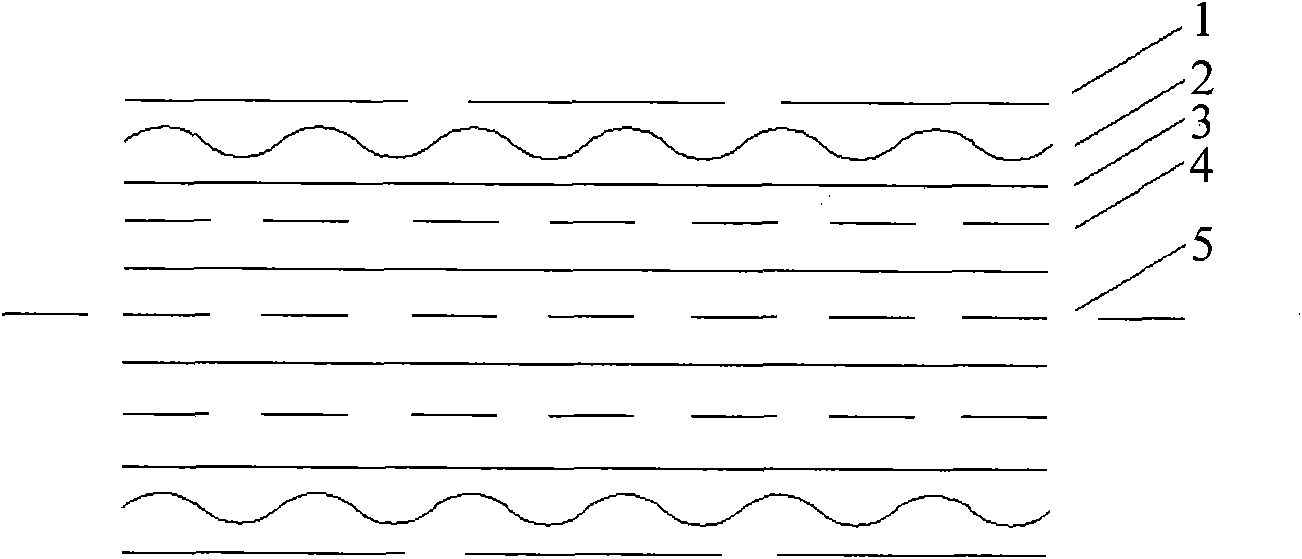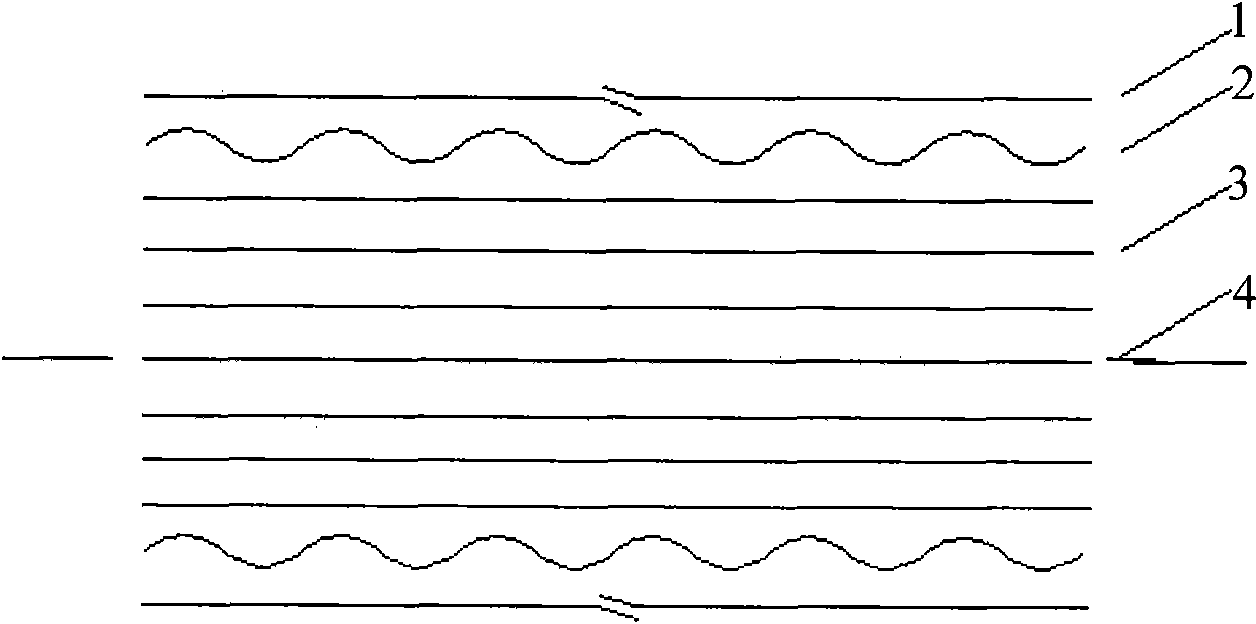Manufacturing method for impregnated paper veneer bamboo plywood
A technology of bamboo plywood and a manufacturing method, which is applied in the directions of manufacturing tools, bonding of wooden veneers, chemical instruments and methods, etc., can solve problems such as affecting the quality of bamboo plywood, restricting product application development, and long hot pressing cycle.
- Summary
- Abstract
- Description
- Claims
- Application Information
AI Technical Summary
Problems solved by technology
Method used
Image
Examples
Embodiment Construction
[0005] Concrete implementation steps and methods of the present invention are as follows
[0006] 1. Processing of base material
[0007] 1.1 Raw material requirements for substrates
[0008] 1.1.1 Bamboo curtains: Bamboo curtains are divided into long bamboo curtains and short bamboo curtains, requiring no bamboo green, bamboo yellow, and no mildew spots;
[0009] The geometric dimensions (length×width×thickness) of the long bamboo curtain (the vertical length of the bamboo strip is the length of the bamboo curtain):
[0010] (2560±10)×(1450±10)×(1.0~1.5±0.1)mm
[0011] The geometric dimensions (length×width×thickness) of the short bamboo curtain (the length of the bamboo strip is the width of the bamboo curtain):
[0012] (2750±10)×(1330±10)×(1.0±0.1)mm
[0013] 1.1.2 Bamboo mat: The thickness of the bamboo strips is 0.5mm, and the bamboo strips are woven vertically and horizontally to form a mat. It is required to be tightly woven, without bamboo green, bamboo yellow, a...
PUM
 Login to View More
Login to View More Abstract
Description
Claims
Application Information
 Login to View More
Login to View More - R&D
- Intellectual Property
- Life Sciences
- Materials
- Tech Scout
- Unparalleled Data Quality
- Higher Quality Content
- 60% Fewer Hallucinations
Browse by: Latest US Patents, China's latest patents, Technical Efficacy Thesaurus, Application Domain, Technology Topic, Popular Technical Reports.
© 2025 PatSnap. All rights reserved.Legal|Privacy policy|Modern Slavery Act Transparency Statement|Sitemap|About US| Contact US: help@patsnap.com



